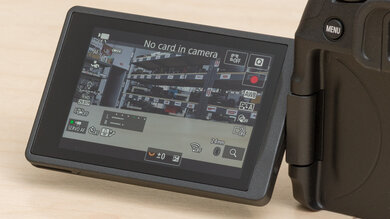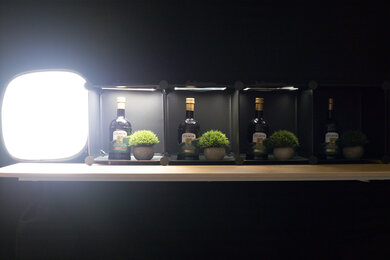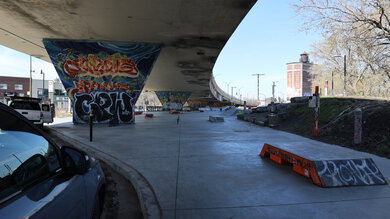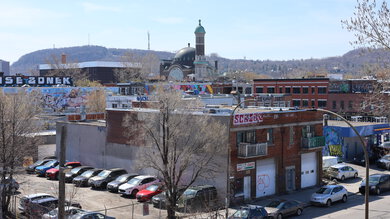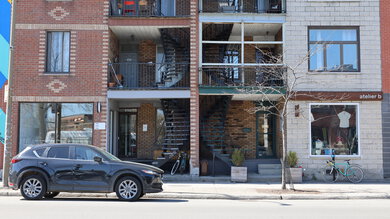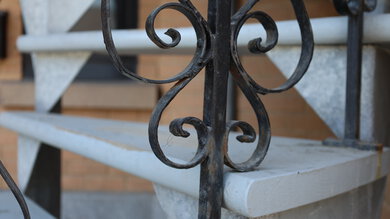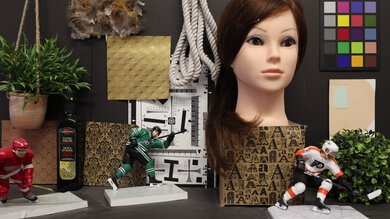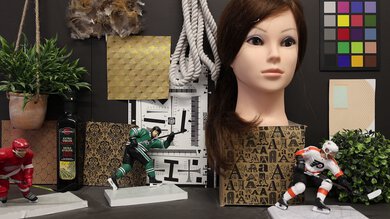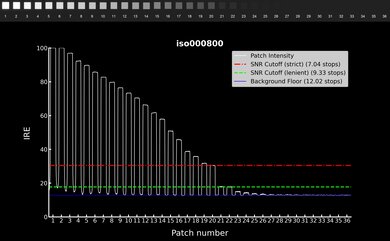The Canon EOS R8 is the entry-level model in Canon's full-frame mirrorless lineup, representing a cheaper, more portable alternative to higher-end models like the Canon EOS R6 Mark II. In that respect, it fills a similar niche as the Canon EOS RP from 2019. It has a similar build and poor battery life but borrows the excellent sensor from the R6 Mark II and significantly improves upon the RP's video capabilities, making this a great choice for photographers who want full-frame image and video quality without spending a fortune.
Our Verdict
The Canon R8 is great for travel photography. It's relatively lightweight and portable for a full-frame camera. Its sensor captures very high-quality images, and this camera has a very effective autofocus system. That said, battery life is disappointing, and its build quality is just decent, with no weather-sealing.
- Excellent image quality.
- Lightweight and fairly portable.
- Fantastic autofocus.
- Poor battery life.
- Somewhat cheap-feeling build quality.
The Canon R8 is excellent for landscape photography. It has a high-resolution full-frame sensor with amazing dynamic range and good noise handling for low-light situations. It's also very lightweight and relatively portable, which is good for hikes to remote locations. Unfortunately, it isn't the most well-built camera and has a poor battery life.
- Excellent image quality.
- Lightweight and fairly portable.
- Wide dynamic range.
- Poor battery life.
- Somewhat cheap-feeling build quality.
The Canon R8 is good for sports and wildlife photography. Though it doesn't have a fully mechanical shutter, it can shoot at a remarkably quick burst rate with its electronic shutter. However, the e-shutter can introduce unwanted artifacts, and its max shooting speed when using its electronic front-curtain shutter (EFCS) is somewhat slow. On the upside, its autofocus tracking is incredibly reliable, with different subject detection modes for animals, birds, or vehicles. The camera also has a fairly large buffer, especially if you prefer to shoot in JPEG, but if you do fill it up, it takes a little while to empty, which can slow you down.
- Excellent image quality.
- Fantastic autofocus.
- Quick burst shooting.
- Fairly large photo buffer.
- Poor battery life.
- Somewhat cheap-feeling build quality.
- No mechanical shutter.
The Canon R8 is great for vlogging, though it isn't the most portable option for on-the-go recording. It has a fully articulated screen that makes it easy to monitor yourself. It also captures excellent-quality video and supports Log recording for more advanced video shooters. Its autofocus system is also fantastic, ensuring you or your subjects stay in focus. That said, it has a poor battery life.
- Lightweight and fairly portable.
- Fantastic autofocus.
- Fully articulated screen.
- Poor battery life.
- Somewhat cheap-feeling build quality.
The Canon R8 is excellent for studio video. It records oversampled 4k video, resulting in excellent overall video quality. On top of that, it supports 10-bit 4:2:2 Log recording internally, with a good amount of dynamic range. However, it can't output RAW video. Battery life is also disappointing, though you can power it externally if you need to. On the upside, there's no recording time limit, and it doesn't struggle too much with overheating.
- Internal 10-bit recording with C-Log 3.
- Fantastic autofocus.
- Amazing video quality.
- Poor battery life.
- Somewhat cheap-feeling build quality.
The Canon R8 isn't meant for POV-style action video, but it's well-suited to recording action from the sidelines. Video quality is excellent, and it has plenty of frame rate options, including 4k at up to 60 fps without a crop. There's also a high frame rate mode that can record 1080p slow-motion video at up to 180 fps. That said, the camera isn't the sturdiest, with no weather-sealing or waterproofing.
- Fantastic autofocus.
- Amazing video quality.
- Not designed for action video mounts.
- Poor battery life.
- No weather-sealing or waterproofing.
- Somewhat cheap-feeling build quality.
The Canon R8 has excellent RAW image quality. Its dynamic range is amazing, so it captures a wide range of highlight and shadow detail. Its sensor also resolves plenty of fine detail, so images appear sharp, and the camera has great noise management in low light.
- Wide dynamic range.
- Great noise handling.
Performance Usages
Changelog
-
Updated Feb 19, 2025:
We wrote text for the new tests added in Test Bench 0.13 and updated the Verdict section accordingly.
- Updated Feb 11, 2025: We've converted this review to Test Bench 0.13. We've added new tests for Video Dynamic Range and Luminosity Patch Detection. You can learn more about these updates in the changelog.
- Updated May 02, 2024: We've touched up some of the text throughout this review to ensure that it's up to date and meets our current standards for quality.
- Updated Jan 29, 2024: Added text to the 'Raw Photo Performance' verdict box.
Check Price
Differences Between Sizes And Variants
The Canon R8 comes in one color: Black. You can see our unit's label.
You can buy the camera body on its own or bundled with a kit lens like the Canon RF 24-50mm f/4.5-6.3 IS STM.
Popular Camera Comparisons
With a powerful sensor and some excellent video capabilities for the money, the Canon R8 has a lot to offer for an entry-level full-frame camera. However, its relatively affordable price comes with some trade-offs in other areas, notably its build quality, lack of a fully mechanical shutter, and poor battery life.
For more options, check out our recommendations for the best mirrorless cameras, the best full-frame mirrorless cameras, and the best mirrorless cameras for beginners.
The Canon EOS R7 and the Canon EOS R8 are both great cameras, but they're aimed at different users. The R7 is a higher-end APS-C camera that's better suited to sports and action photography. It's sturdier, has a mechanical shutter, and has a longer battery life. The R8, on the other hand, is an entry-level full-frame camera, so it offers better dynamic range and low-light capability. However, it doesn't feel as well-built and has a poor battery life.
The Canon EOS R6 Mark II is better overall than the Canon EOS R8, but they sit at different price points. Though they use the same sensor, the R6 Mark II has more to offer, with external RAW video output, a higher-resolution EVF, and in-body image stabilization. It's also weather-sealed, has a mechanical shutter option, and offers more physical controls and dials, along with dual SD card slots and a much better battery life.
The Canon EOS R6 is a bit better than the Canon EOS R8. It's a higher-end model with better build quality and a much longer battery life. Though it has a slightly lower resolution sensor, image quality is roughly on par. It also has in-body image stabilization. That said, the R8 is more portable and uses a newer version of Canon's autofocus system.
The Canon EOS R10 and the Canon EOS R8 are both good cameras that use different-sized sensors. The R10 will offer a bit more value for its price for most people, with faster burst shooting, better battery life, and very respectable video features. On the other hand, if you need full-frame image quality in a portable camera body, the R8 is the way to go.
Test Results

The Canon R8 is very portable for a full-frame camera and very similar in size to the Canon EOS RP. It's super lightweight, with a fairly thin body that's easy to carry around and won't cause much, if any, fatigue during long shooting days. That said, it isn't as portable as compact full-frame models like the Sony ZV-E1 or the Sony α7C II.
The camera's build quality is decent. The body isn't weather-sealed, but overall, the camera feels pretty solid despite its plasticky exterior. It's made mostly of lightweight plastic and feels very similar in build quality to the Canon EOS RP. Given this model's higher price point, however, it feels a bit underwhelming.
While the R8 is modeled after the Canon EOS RP, it also has some design updates that follow in the footsteps of newer models like the Canon EOS R6 Mark II. For example, there's now a dedicated switch to go from 'Photo' to 'Movie' mode, and the 'Lock' function has been integrated into the On/Off switch. You can see how the R6 II, the R8, and the RP (from left to right) compare from the front, the top, and the back.
The R8 also includes Canon's new multi-function hot shoe, which includes a 21-pin electronic interface that's advertised to offer more functionality, like power supply, and more efficient communication with newer accessories, including speedlights and microphones. Some accessories may require the use of an AD-E1 adapter.
There's no fully mechanical shutter on the R8. You can only choose between a fully electronic shutter or an electronic front-curtain shutter (EFCS). The front-curtain shutter is good for reducing vibrations at slower shutter speeds, but it's worth noting that it can also introduce bokeh artifacts when shooting at wide-open apertures.
The camera's ergonomics are excellent. It has a large textured grip that's well-suited to most hand sizes, providing ample room for your fingers to rest comfortably when using a moderate-sized lens. If you need to, you can always buy the Canon EG-E1 extension grip, originally released for the RP, which attaches to the bottom of the camera and extends the grip a little for those with larger hands.
For the most part, the buttons are well-placed and accessible, making it easy to adjust settings as needed. However, the lack of a thumbstick on the back can make it tricky to adjust your autofocus point on the fly.
The EVF has a pretty standard 2.36 million-dot resolution, so you'll get a reasonably clear and sharp image. However, it's nothing to write home about, especially as we see more cameras with higher-res EVFs. Unfortunately, the eyecup around the viewfinder is made of plastic and isn't especially comfortable to use.
The Canon R8 has a fully articulated screen. It has a higher resolution than the screen on the Canon EOS RP, providing a slightly sharper image. It also gets very bright, which is great for combatting glare on sunny days. It has full touch functionality as well, so you can use it to navigate the menus, select focus points, or as a touch shutter.
The menu system is very intuitive and easy to navigate using either the touchscreen or the physical controls. The settings are clearly organized and user-friendly. There are also a lot of customization options to tailor the shooting experience to your preference and make it easier to access commonly used settings. There's also an extensive 'Help' function that provides explanations and additional information about certain settings and menu items when you press the 'Info' button.
The Canon R8 uses the same 24 MP full-frame sensor and DIGIC X processor as the Canon EOS R6 Mark II. The sensor and its implementation are a notable step up from the Canon EOS RP, despite having a slightly lower resolution, with a wider native ISO range and more efficient processing.
The Canon R8 uses the same LP-E17 battery as the Canon EOS RP, which yields a relatively short battery life. It's CIPA-rated for 290 shots on a full charge when using the screen, which is slightly higher than the RP but still falls far short of cameras with larger batteries like the Canon EOS R6 Mark II. When using the viewfinder, it's only rated for 150 shots, which is quite poor. That said, the camera does have power-saving settings. With power-saving enabled, the camera is rated for 370 shots using the screen and 220 shots using the viewfinder. It's also worth noting that CIPA ratings tend to fall on the conservative side, so your actual battery life will vary in real-world usage.
Video battery life is a more disappointing story. The camera lasts for just over an hour of continuous video recording in 4k at 30 fps. That's a fair bit shorter than the RP's video battery life. However, this camera does record uncropped oversampled 4k video, unlike the RP, so it makes sense that it drains the battery much quicker.
The Canon R8 has a remarkably fast max burst rate when using its electronic shutter, similar to the Canon EOS R6 Mark II. At max speed, you'll get approximately 40 fps burst shooting. However, in EFCS mode, the camera maxes out at 6 fps. Shooting in RAW format, the camera's buffer fills up after just under 90 shots, which isn't bad but will fill up very quickly when shooting at the max 40 fps burst rate. Once full, it also takes a fairly long time to clear its buffer, which can slow you down or interrupt your shooting in situations where timing is critical. When shooting in JPEG, the buffer clears fast enough to effectively shoot indefinitely.
The Canon R8 uses the same autofocus system as the Canon EOS R6 Mark II, which does an excellent job of tracking moving subjects. It has various subject detection modes for animals and vehicles, on top of regular human face/eye detection. The tracking feature sticks to human subjects very well, even with trickier backgrounds or with faster movement. It's also a very intuitive autofocus system to use, with plenty of settings to fine-tune its performance to your needs. You should have a very high hit rate when letting the autofocus do its thing.
Using a single focus point without tracking, autofocus is quick and accurate. As long as the subject remains under the focus point, you should have no trouble focusing on your chosen subject, whether it's a static object or someone moving in a more predictable way.
Though the R8 doesn't have in-body image stabilization, you can get very stable shots at very slow shutter speeds using an optically stabilized lens like the Canon RF 24-105mm f/4-7.1 IS STM. That said, stabilization performance can vary depending on different factors, including the lens, focal length, and how steady your hands are.
The camera has excellent dynamic range. Just like the Canon EOS R6 Mark II, it can capture a very wide array of highlight and shadow detail. Even in dimmer conditions, with a higher noise floor, it still has a great amount of dynamic range.
Like the Canon EOS R6 Mark II, the R8 is excellent at resolving fine detail, giving you a bit of leeway to crop your photos.
The camera is great at managing noise levels in low light. While noise is inevitable in low-light situations, the sensor keeps noise levels to a minimum when you have to bump the camera to higher ISO settings when there's less available light.
Like the Canon EOS R6 Mark II, the Canon R8 records 4k video that's oversampled from the full 6k resolution of its sensor. However, unlike that model, the R8 doesn't support external RAW video output.
Note that All-I compression is only available in the camera's time-lapse mode.
The camera can capture 4k video at up to 60 fps without a crop, which is fantastic considering its price. This is great for capturing smooth-looking realistic footage or light slow-motion.
The camera's 4k internal recording capability is excellent. It can record in 10-bit 4:2:2 with the C-Log 3 profile, expanding your dynamic range in video and giving you more room to make color adjustments in post. There's also a handy 'View Assist' function for Log recording that applies a LUT when playing back videos in-camera to give you an idea of what the final product will look like.
There's no recording time limit, which is great for long-form recording. The camera also didn't overheat during our battery life test, though it did come very close to doing so. In warmer conditions, you're likely to experience some overheating when recording in 4k. It's also worth noting that this camera uses a smaller battery than the Canon EOS R6 Mark II, and its battery life is a lot shorter, meaning your effective recording time is more limited unless you use an external power supply.
The autofocus is incredibly effective in video mode. In 4k, it can track and keep moving subjects in focus with little issue. You also have plenty of settings to fine-tune its performance. That includes, for example, the same setting found on the Canon EOS R6 Mark II that lets you set it to only focus on detected subjects, which helps to minimize shifting focus when a subject leaves the frame.
There's also an 'AF for close-up demos' focus mode that's available when using the camera for livestreaming or as a webcam via USB-C. Similar to the 'Product Showcase' feature found on Sony vlogging cameras like the Sony ZV-E10, it quickly switches focus to an object held up close in the frame. You can see that in action here.
Thankfully, rolling shutter is a lot better than it is on the Canon EOS RP, with noticeably less skewing and distortion. That said, it still isn't great, especially with faster camera pans and movement.
There's a high frame rate mode in FHD that lets you record slow-motion 1080p footage at up to 180 fps without sound. It's handy for incorporating super slow-mo shots into your videos. Otherwise, regular recording in 1080p is available at up to 60 fps.
The FHD internal recording capability is also amazing. Just as in 4k, you get internal 10-bit 4:2:2 recording in C-Log 3. There's also no recording time limit, which is great for longer-form content.
The autofocus is just as effective in 1080p as it is in 4k. It has different subject detection modes, including both face and eye detection. Its tracking feature does a fantastic job keeping moving subjects in focus, and it's very intuitive to use, with different settings to fine-tune AF performance.
There's much less rolling shutter effect in 1080p, which is great, though you'll still notice some wobbling and skewing with faster camera movements.
The Canon EOS R8 has good dynamic range overall. Using Canon Log 3, you get a solid dynamic range above the background floor, but you won't have the most leeway in the shadows. Taking noise into account, there are fewer clean, usable stops, but it's still decent, so you'll still be able to capture a fairly wide range of detail in high-contrast scenes.
Tested settings:
- Resolution: 4k
- Frame Rate: 30 fps
- Log Format: C.Log3
The R8 has a good amount of dynamic range allocated in the highlights and retains highlight detail pretty well at higher ISO settings, though it doesn't have the greatest leeway in the shadows.
Tested settings:
- Resolution: 4k
- Frame Rate: 30 fps
- Log Format: C.Log3
The Canon R8 only has a single SD card slot, which is bad news for those who prefer to have a running backup while they shoot, but it's also expected at this price point. On the upside, it's rated for faster UHS-II cards. It's located in the battery compartment on the bottom of the camera, making switching out cards when using a tripod a little harder. However, depending on the size of your tripod head, mount, or gimbal, you may still be able to access the compartment.







